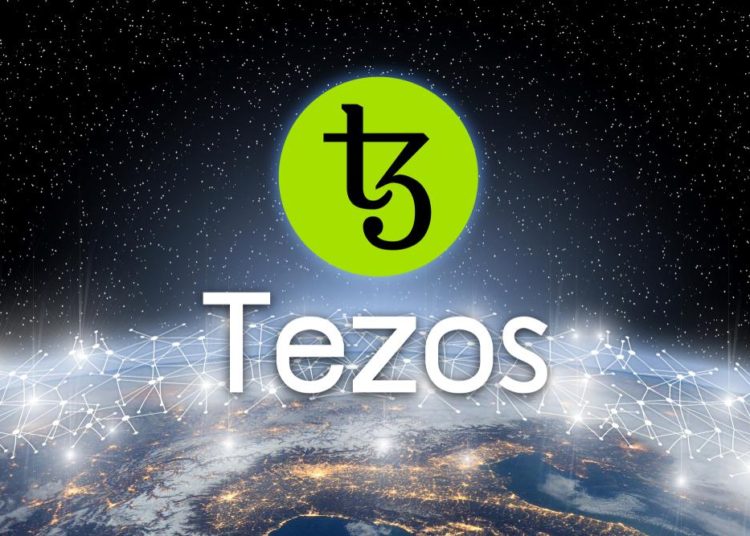Source: Akarat Phasura – Shutterstock
- Tezos blockchain set to launch its ninth protocol upgrade, Ithaca 2, this week.
- The upgrade introduces a new consensus mechanism, Tenderbake, to reduce latency and provide improved finality of transactions.
- The Tezos team plans to integrate Layer 2 scalability solutions, specifically rollups, to the blockchain later in the year.
Proof-of-stake pioneer blockchain, Tezos is set to launch its ninth, and most important protocol upgrade, Ithaca 2. The upgrade took a three-month-long development process, following a vote by the Tezos community to launch the upgrade. Ithaca 2, as the upgrade is known, introduces a new consensus mechanism, Tenderbake, which replaces the current one, Emmy.
The new Tenderbake consensus mechanism enables lower latency on the protocol, which lowers block times and in turn, ensures the smoother and more efficient running of applications. Additionally, Tenderbake also ensures faster validation and finality of transactions meaning faster transactions on the blockchain. Tenderbake is modeled off Tendermint, the consensus mechanism pioneered by the Cosmos protocol, making it the only Liquid Proof-of-Stake protocol using Tendermint.
Apart from solving latency and finality problems, the Tenderbake consensus mechanism increases the security of transactions, implements deterministic finality, and prepares the platform for high throughput transactions. Notwithstanding, the platform improves the application layer experience, sets the stage for expanded smart contract functionality, and entices developers to launch their innovations on Tezos blockchains.
Tezos’ scalability solutions to boost global adoption
Despite the new upgrades significantly improving the scalability of the protocol, there’s still much development needed to handle a possible global adoption of Tezos. The increase in projects, companies, and institutions in the Tezos ecosystem brings the need for high throughput to handle more activity on the platform. Despite the vibrant efforts by the team to increase throughput, there are natural limits to how many transactions a block can store.
In an effort to increase throughput past the natural limit, projects are forced to sacrifice either decentralization or security. This is known as the blockchain trilemma, whereby a blockchain cannot achieve all of the three features: decentralization, scalability, and security, without compromising on one of them. As Tezos is built on community principles, decentralization remains a key part of the blockchain, and security is paramount for all platforms.
This leaves scalability as the only area that Tezos cannot massively improve despite the new Tenderbake upgrade. To this end, Tezos integrated the best features of other blockchain protocols through an on-chain mechanism to amend its network and seamlessly deploy upgrades.
Integrating optimistic rollups and zk-rollups
The Ithaca 2 upgrade paves the way for Tezos to enable optimistic and zk-rollups, as well as EVM compatibility. Tezos is leading the charge for blockchain scalability through its seamless on-chain governance enabling the protocol to rapidly integrate the leading features across the blockchain industry. At the start, Tezos will integrate optimistic rollups with an aim to launch zk-rollups on the platform in the near future.
Simply, a rollup is an entity on the main chain, with its own address, that compactly represents off-chain transaction execution and state updates. Assets can be deposited to the rollup – and withdrawn – by accounts, smart contracts, and other rollups. Transactions using the rollup are still sent to an inbox on the main chain but are left unprocessed by the main chain nodes, they are collected by specialized rollup operators.
For optimistic rollups, the withdrawal time is extended because returning the funds or transactions back to the main blockchain could be disputed. On Arbitrum’s optimistic rollups, the waiting time is 7 days. While this ensures security, it still poses a big challenge on the time taken to withdraw the funds. To this end, the Tezos development team is looking at integrating zk-rollups in the future.
The principle of moving transactions off-chain and posting commitments to the main chain is the same as with optimistic rollups, but zk-rollups attach a cryptographic proof of correctness with the commitment. This removes the need for a ‘dispute period’ when withdrawing funds to the main blockchain. This is made possible because zk-proofs are very small and can be checked by main chain nodes in a fraction of a second, regardless of the number of transactions or smart contract operations involved.
Credit: Source link












































